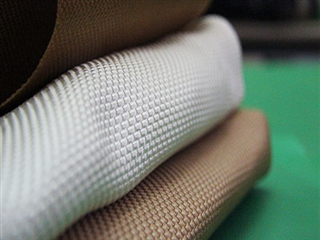The rapid spread of COVID-19 around the world with over 16.3 million cases and over 6,49,000 deaths brings new challenges for the community. The Coronavirus disease (COVID-19) pandemic outbreak has influenced and inflicted millions of life. The Severe Acute Respiratory Syndrome Coronavirus 2 (SARS-CoV-2) virus has spread across all regions ranging from North America, Europe, Asia-Pacific, Middle East and Africa up to South America.
COVID-19 has been declared public health emergency of international concern (PHEIC) by the World Health Organization (WHO) due to its increased spread across the globe. The pandemic outbreak has engulfed most of the countries governments, national and international authorities have taken unprecedented measures in the order to limit the spread of this contagious virus.
The Coronavirus disease (COVID-19) pandemic has forced Governments to close borders, businesses, imposed isolation & lockdowns in the order to save lives and widespread closures in order to slow down the spread of the Severe Acute Respiratory Syndrome Coronavirus 2 (SARS-CoV-2). Countries are facing a multi-layered crisis comprised of domestic economic disruptions, plummeting external demand, prices collapse and straining health systems.
Various efforts are taking place in the order to shift in spending patterns, behavioural changes (such as avoiding purchasing), the repercussions of the dramatic tightening in global image guided surgery market conditions, volatile commodity prices and increasing debt burdens. The Coronavirus disease crisis has impacted global economy and created economic recessions in serval countries around the world.
FIGURE 1 COVID-19 PANDEMIC IMPACT ON GLOBAL IMAGE GUIDED SURGERY MARKET, REGION LEVEL ANALYSIS (USD MILLION)

The unprecedented strain of COVID-19 has completely changed image guided surgery market dynamics worldwide. Image guided surgery practices have been drastically impacted irrespective of specialties as all healthcare professionals have tried to triage the urgency of daily surgical procedures and to find ways to manage less urgent surgical procedure where possible, which has drastically changed in the demand of image guided surgery devices and services. Additionally, uncertainties arisen due to Coronavirus disease (COVID-19) pandemic outbreak concerning the global market and are the effecting public policies intended to curtail its spread are adding to market volatility.
Various regulatory authorities has asked healthcare professional to defer and delay image-guided surgeries which are not time‐critical or essential can be postponed to a later date when the pandemic subsides. Several surgical societies and organizations have issued proposed procedures lists and ways of prioritizing these during times of high disease pressure. Deferred and delayed image-guided surgeries have affected overall revenue of the manufacturers of image-guided surgery equipment which results in the decline of the revenue during the crisis as cancellation of these surgical procedures includes shutdown of the non-emergency care at the hospitals or various healthcare facilities in order to reduce the risk of patients being exposed to COVID-19.
In addition, as healthcare providers are pre-occupied with the pandemic, their own capacity has also reduced to purchase any non-essential equipment. The implications of COVID-19 have a considerable influence on the image-guided surgery devices and equipment’s revenue decline is now clearly visible. Various factors which have indirect influence on the decline in surgical procedures include flight cancellations, travel bans, mass quarantine along with growing panic among the population and uncertainty about future.
The report has depicted that image-guided surgery devices volume has dropped around the world and data collected from various countries represents that majority of the surgeries categorized as non-essential have been cancelled during the peak period of the COVID-19 which has affected the image-guided surgical market and equipment revenue has been declined in the duration.
The supply chain of image-guided surgical equipment has been affected due to decline trade and supply chain has come to almost disrupted. The supply chain is one of most crucial for any market as various components parts and materials and some spare parts required for manufacturing. The image-guided surgical equipment are expensive in nature and also have high installation cost. Image-guided surgical equipment supply is facing constant challenges as supply of raw materials has been critically disrupted due to the quarantine and lack of raw materials and labour.
The warehouses are not remained same in post Coronavirus disease (COVID-19) pandemic breakout situations as compared to pre Coronavirus disease (COVID-19) pandemic breakout situations. Further, manufactures are facing issues in placing orders for raw materials. The Coronavirus disease (COVID-19) pandemic has affected the commercials and the product transport controls have been culminated in the closure of large portions of the global economy, resulting in fragmented supply chains owing to insufficient resources and manpower, and industrial slowdowns or stoppages.
Image-guided surgical equipment manufacturers are currently operating under risk management and contingency plans, manufacturing operations and workforce safety protocols all at the same time. Some image-guided surgical equipment manufacturing have established emergency response team (ERT) to solve all challenges immediately to keep the business as operative as maximum as possible and to have clear understanding of their production demand in the market and supply chain ecosystem constraints related with the operations and manufacturing.
Various autonomous authorities, Regulatory authorities and governments including World Health Organisation, European Medicines Agency, Food and Drug Administration, have published new guidelines for management of life-saving image guided surgeries and accessories during the Severe Acute Respiratory Syndrome Coronavirus 2 (SARS-CoV-2) pandemic.
Governments in various countries have stressed on the importance of flexibility in the production and asked manufacturers and healthcare provider to facilitate patients with the emergency image guided surgeries to save life. Recommendations issued by different professional bodies and Regulatory authorities for management of surgical patients during Coronavirus disease (COVID-19) pandemic outbreak, are revolving around main three issues such as triage based on possibility of harm to the patients in case if surgery is delayed.
The Coronavirus disease (COVID-19) pandemic outbreak is pushing image guided surgery industry boundaries and forcing manufactures and researchers to find new ways of manufacturing new products with unique design, new functionality and new technologies.
The DBMR Insights will provides case study based analysis of changes in market dynamics in terms of market share, new entrance, new developments, impact on domestic and localised market players, country level analysis, emerging market, PESTLE analysis, revenue pockets analysis, changes in market regulations, strategic decisions, product approvals, product launches and geographic expansions in the markets.
FIGURE 2 DBMR INSIGHTS ON COVID-19 PANDEMIC IMPACT ON GLOBAL IMAGE GUIDED SURGERY MARKET DYNAMICS
 To understand the analysis and the market scenario contact us for an Analyst Brief, our team will help you create an impact solution for COVID-19 pandemic.
To understand the analysis and the market scenario contact us for an Analyst Brief, our team will help you create an impact solution for COVID-19 pandemic.


 To understand the analysis and the market scenario contact us for an Analyst Brief, our team will help you create an impact solution for COVID-19 pandemic.
To understand the analysis and the market scenario contact us for an Analyst Brief, our team will help you create an impact solution for COVID-19 pandemic.

